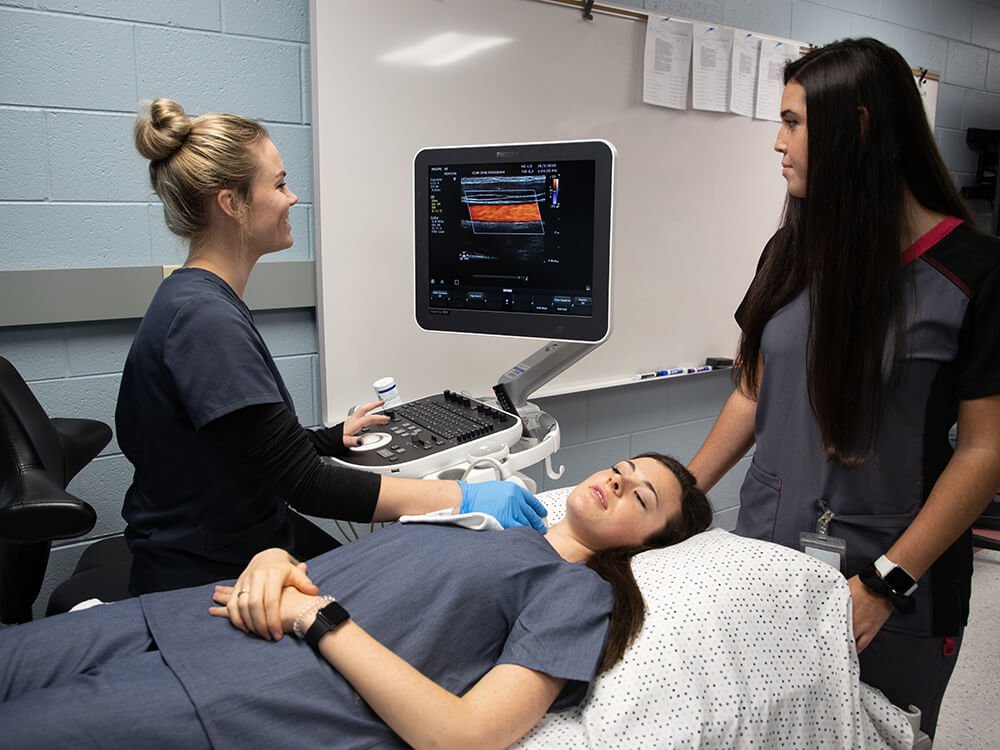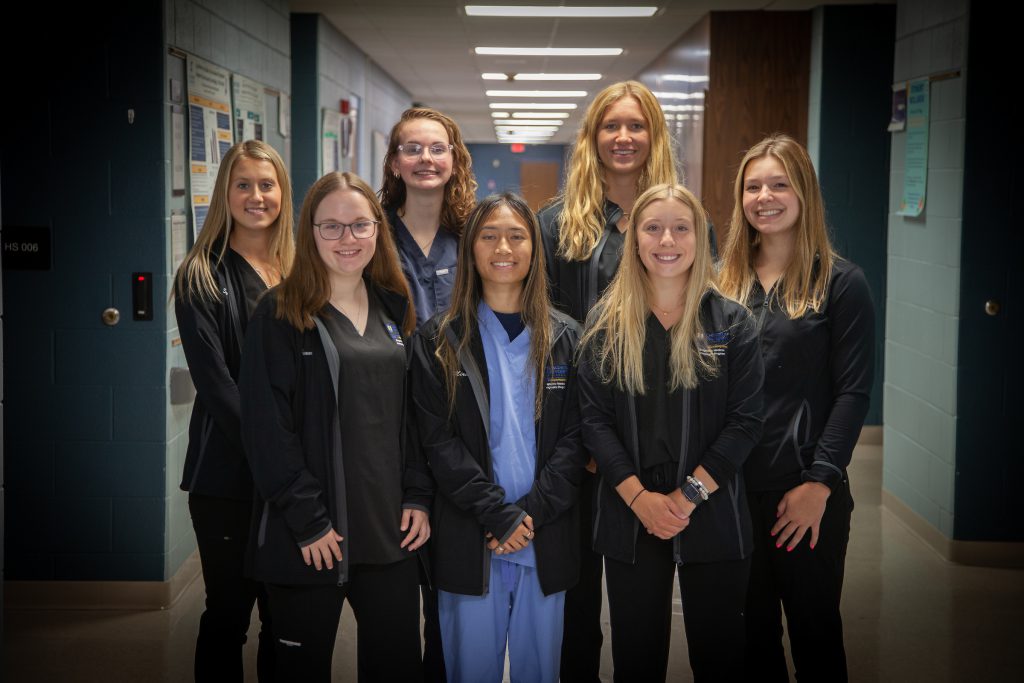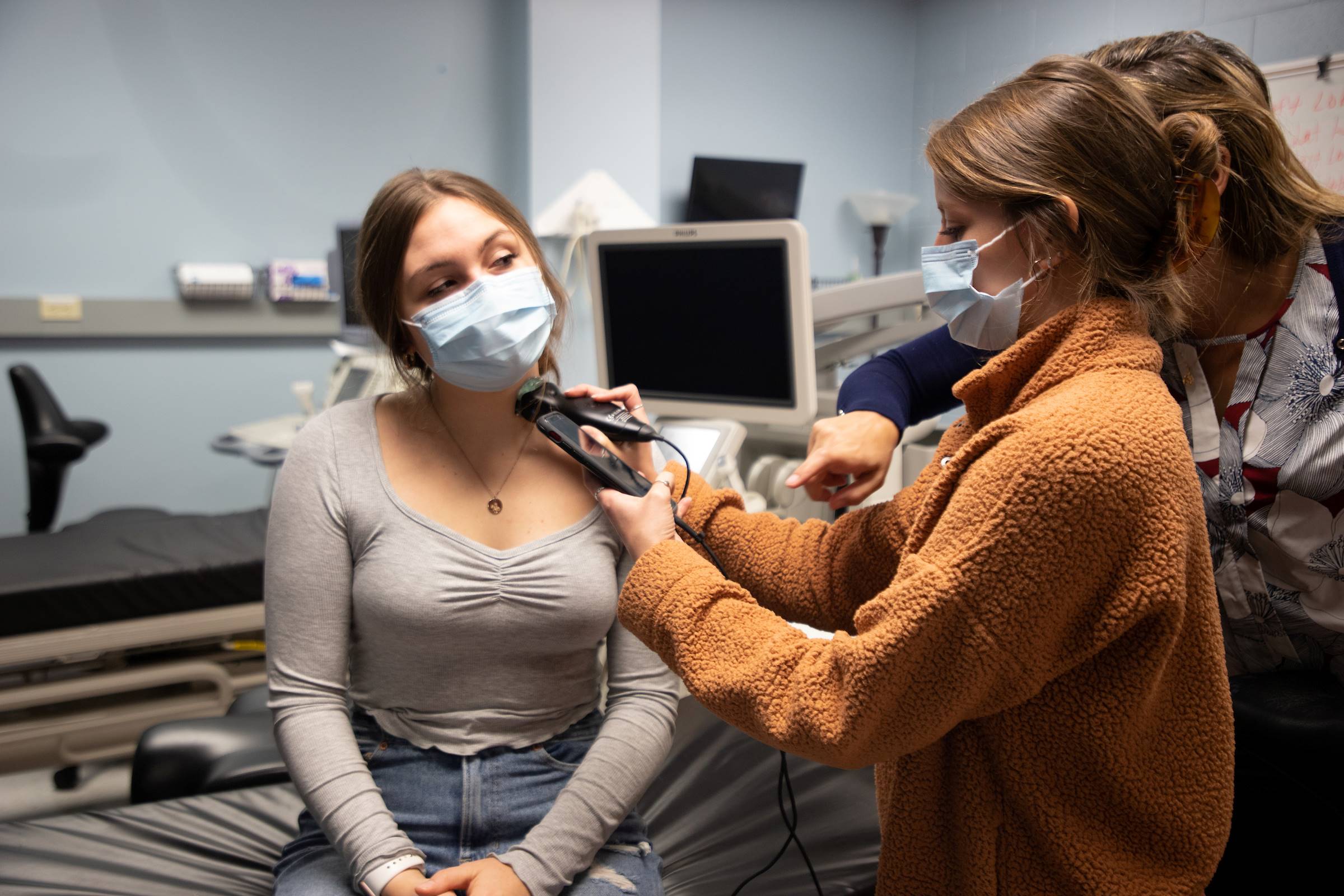
Senior, Miranda Singson, gives her insight on what a day looks like for a Diagnostic Medical Sonography student.
On a typical day as a sonography student, I begin with waking up, making some coffee, then making my lunch for the day. As far as the week goes, I either have clinicals, class, or both on the same day! As much as I enjoy learning, I would have to say clinicals are definitely my favorite part of the program. On these days, we work with ultrasound techs at hospitals and clinics, practicing what we’ve learned in class as well as what we’ve learned in what we call scan lab. Scan lab is introduced to us in our first year in the program and ends as we come to an end of our first year.
“Most importantly, it is the first step for us students in getting our hands on an ultrasound probe and seeing what different anatomical structures look like on ultrasound when scanning.”
Miranda Singson, DMS major
Clinicals help us to improve in our scanning abilities and help us to develop new strategies and techniques along the way, which help us to become more mindful, efficient and knowledgeable. Of course, there may be times when the hospital or clinic won’t have as many patients for that day, but that doesn’t mean we’re sitting there doing nothing. Slower days serve as a great opportunity to catch up on schoolwork and also help make the time go by quicker.
Balancing Act

As far as class days go, we either have 2 or 3 classes a day, each of them lasting up to 2 hours. We usually have about an hour break in between each class, so I usually use that time to sneak in another coffee or get something to eat. On days when we have both class and clinicals, we begin with clinicals in the morning and only 1 class later in the evening. I try to find a time between clinicals and class to sneak in dinner, so I don’t get too hungry during class time. Whether it be at the end of a clinical day or a class day, I’ll either study, work on homework, or just take the time to take a break and watch a movie when I get home.

Overall, I truly enjoy the sonography program. It’s a constant learning experience since we’re able to improve our skills both inside the program, such as with our scanning abilities, and outside of the program, such as responsibility, organization, and time management. Although it may sound like a lot, you eventually get used to the flow of the program and before you know it, you’ll be done with the program and finally be able to work as a sonographer in the real world.
Want in?
The Department of Imaging at Concordia University Wisconsin encompasses two bachelor’s degree programs.
The Bachelor of Science in Diagnostic Medical Sonography (DMS) offers three distinct pathways to prepare learners to step forward into their calling as a medical sonographer: the undergraduate DMS certificate, in-person bachelor’s degree, or an online sonography completion program.
Meanwhile, the Bachelor of Science in Radiologic Technology, or rad tech program, is a two-plus-two offering. Students spend the first two years on the Concordia campus taking prerequisite classes before applying for placement into one of our JRCERT-accredited partner rad tech programs. The second two years are within the professional phase of the major and will consist of didactic and clinical coursework.
Learn more by clicking on the links below.
—Miranda Singson is a student majoring in Diagnostic Medical Sonography at Concordia University Wisconsin. She is currently a senior, graduating in May 2024.
